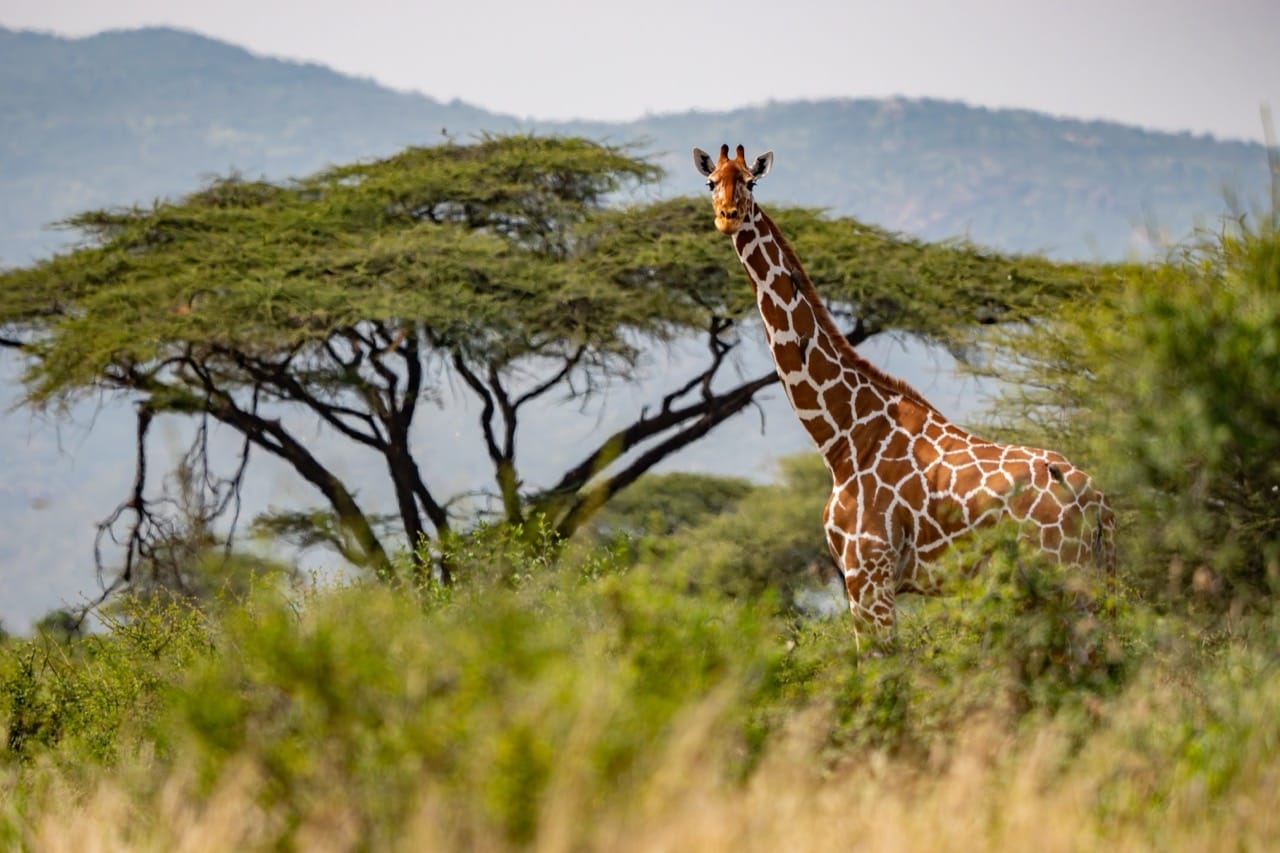Giraffes, with their long necks and distinctive coat patterns, are among the most iconic symbols of Africa’s wild savannahs. These serene creatures are not only a marvel of evolutionary adaptation but also play a significant role in the ecological balance of their habitats. Giraffes are fascinating not only for their height, which makes them the tallest land animals on Earth, but also for their gentle demeanor and unique physical features.
Characteristics / Physical Description
Giraffes are known for their extremely long necks and legs, which contribute to their impressive height, allowing males to reach up to 18 feet and females slightly shorter. Their skin is covered in a pattern of irregular brown patches separated by lighter lines, which varies greatly among the different subspecies and serves as camouflage in their natural environment. Each giraffe’s pattern is unique, much like a human fingerprint. Additionally, they have small horn-like structures known as ossicones on top of their heads, which are covered in skin and fur.
Taxonomy and Classification
Giraffes belong to the family Giraffidae and are classified under the genus Giraffa. There are four recognized giraffe species, and several subspecies, differentiated by their coat patterns and geographic range. Recent genetic studies have suggested that these groups may be distinct enough to be considered separate species, a testament to the giraffe’s diverse adaptation to various African ecosystems.
Behavior and Social Structure
Giraffes are social animals, typically found in loose, open herds that can range from a few individuals to several dozen. They do not have strong social bonds like those of elephants, but they do engage in casual groupings that change frequently. Giraffes are also non-territorial; their home ranges overlap widely with those of other herds. Communication among giraffes is predominantly silent, but they do use various forms of body language and also have the capability to produce sounds and vocalizations.
Habitat and Distribution
Giraffes inhabit the savannahs, grasslands, and open woodlands of sub-Saharan Africa. Their distribution is closely tied to the presence of acacia trees, which are a primary food source. The range of the giraffe has reduced significantly in the last few centuries due to habitat loss and poaching, leading to isolated populations that are often vulnerable to further decline.
Diet and Feeding Habits
Giraffes are browsers that primarily feed on the twigs of trees, favoring species like the acacia. Their long necks enable them to reach high branches, while their tough, prehensile tongues (which can be up to 18 inches long) help them pull leaves from thorny branches. Giraffes have a ruminant digestive system with four stomach chambers, which allows them to maximize nutrients from their fibrous diet.
Breeding and Reproduction
Female giraffes give birth standing up after a gestation period of about 15 months. They typically bear a single calf, which can stand and run within a few hours of birth—a crucial adaptation to evade predators. Calves are weaned at around 6-9 months but may continue to nurse for more than a year. The high mortality rate among young calves is offset by the relatively long lifespan of giraffes, which can live up to 25 years in the wild.
Relationship with Humans
Historically, giraffes have been hunted for their meat, hide, and tails, the latter often used as symbols of status and authority in some African cultures. Today, they are primarily threatened by habitat destruction and poaching. Conservation efforts are crucial for their survival, focusing on habitat restoration and anti-poaching measures. Giraffes are also popular attractions in zoos worldwide, where they play a vital role in educational programs about wildlife conservation.
Evolutionary History
Giraffes are believed to have evolved from an antelope-like ancestor over a period of 15 to 25 million years. Their elongated necks, which are thought to have developed to allow access to higher foliage, involve a number of skeletal and cardiovascular adaptations. These evolutionary changes have enabled giraffes to exploit a feeding niche inaccessible to other herbivores.
Use as Research Animals
While not common in experimental research, giraffes offer unique insights in studies related to cardiovascular physiology and the effects of high blood pressure due to their long necks. Understanding how giraffe physiology manages high arterial pressure can offer clues for treating human cardiovascular diseases.

